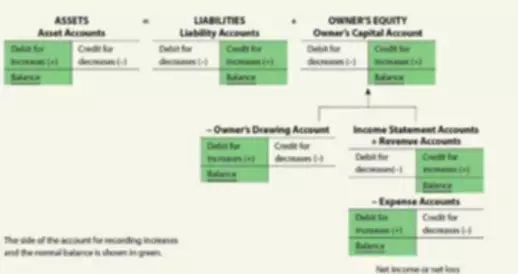Content
- You can cover more of the purchase cost upfront
- What Is a PTIN Number? And Does Your Tax Preparer Have One?
- What is the Double Declining Balance Method?
- Double Declining Balance Depreciation Method
- What happens if you miss the tax deadline? Penalties for late filing
- Recommended Articles
- What is depreciation?

Remember, in straight line depreciation, salvage value is subtracted from the original cost. If there was no salvage value, the beginning book balance value would be $100,000, with $20,000 depreciated yearly. For instance, the original book value of an asset was $112,000, the year-end book value of the same asset will decrease due to depreciation. Under a 40% DDB depreciation rate, the book value of the same asset two years later would only be $40,320. This article will serve as a guide to understanding the DDB depreciation method by explaining how it works, why it can be beneficial, and its potential downsides.

Salvage Value → The residual value of the fixed asset at the end of its useful life – most companies assume this to be zero. Useful Life Assumption → The useful life assumption is the implied number of years in which a fixed asset is assumed to provide economic benefits to the company. Investopedia requires writers to use primary sources to support their work. These include white papers, government data, original reporting, and interviews with industry experts.
You can cover more of the purchase cost upfront
If you have a side job, be sure to pay your https://www.bookstime.com/ tax throughout the year. You’ll need to pay taxes directly to the IRS via quarterly estimated tax payments. Under straight-line depreciation, the depreciation expense would be $4,600 annually—$25,000 minus $2,000 x 20%. In DDB depreciation the asset’s estimated salvage value is initially ignored in the calculations. However, the depreciation will stop when the asset’s book value is equal to the estimated salvage value.
How do you calculate the double-declining balance method of depreciation? What are the pros and cons of using the double-declining balance method? Here’s how you can decide if double-declining balance is right for your business. The “double” or “200%” means two times straight-line rate of depreciation.
What Is a PTIN Number? And Does Your Tax Preparer Have One?
However, the final depreciation charge may have to be limited to a lesser amount to keep the salvage value as estimated. Also, you’ll get a bar graph which represents the values the online calculator has generated. The Double Declining Balance Method is a system designed to accelerate the cost recovery of an asset’s depreciable base. After all, most assets depreciate faster in their early years of service, and slower in their later years of service. What the double declining balance method is and how to calculate it. This is the calculated depreciation expense for the selected year.
Instead, the asset will depreciate by the same amount; however, it will be expensed higher in the early years of its useful life. The depreciation expense will be lower in the later years compared to the straight-line depreciation method. Depreciation ExpenseDepreciation is a systematic allocation method used to account for the costs of any physical or tangible asset throughout its useful life. Its value indicates how much of an asset’s worth has been utilized.
What is the Double Declining Balance Method?
Whether you use the straight-line method or double declining method, the total depreciation expense related to an asset will still be the same. It’s one of the many variants of accelerated depreciation that recognize higher depreciation expenses during the early years of the asset. We refer to this method as the double declining balance method of depreciation. Not all assets are purchased conveniently at the beginning of the accounting year, which can make the calculation of depreciation more complicated. Depending on different accounting rules, depreciation on assets that begins in the middle of a fiscal year can be treated differently. One method is called partial year depreciation, where depreciation is calculated exactly at when assets start service.
- You calculate 200% of the straight-line depreciation, or a factor of 2, and multiply that value by the book value at the beginning of the period to find the depreciation expense for that period.
- These Sources include White Papers, Government Information & Data, Original Reporting and Interviews from Industry Experts.
- Usually, during the asset’s last year, DDB is no longer applicable.
- The double-declining balance depreciation value keeps decreasing over the life of the asset.
- Over the life of the equipment, the maximum total amount of depreciation expense is $10,000.
The double-declining method of depreciation accounting is one of the most useful and interesting concepts nowadays. It is also one of the most popular methods of charging depreciation that companies use. The double-declining balance method is one of the depreciation methods used in entities nowadays. It is an accelerated depreciation method that depreciates the asset value at twice the rate in comparison to the depreciation rate used in the straight-line method. Depreciation is charged on the opening book value of the asset in the case of this method. In most depreciation methods, an asset’s estimated useful life is expressed in years.
Double Declining Balance Depreciation Method
Which translates to double declining balance method of $400 per year for the company’s van. In year 5, however, the balance would shift and the accelerated approach would have only $55,520 of depreciation, while the non-accelerated approach would have a higher number. For mid month convention, for example, an asset placed in service in October will have 2.5 months in the first year to cover 1/2 of October and all of November and December. For full month convention, for example, an asset placed in service in October will have 3 months in the first year to cover all of October, November and December. Get instant access to video lessons taught by experienced investment bankers. Learn financial statement modeling, DCF, M&A, LBO, Comps and Excel shortcuts.

This equation is valid for all values of t up until the point where the asset attains its scrap value, or the straight line depreciation model actually shows a lower value. Here is an example to illustrate how to use double declining depreciation. If the asset for which you are calculating depreciation contains an averaging convention, LN adjusts the depreciation expense for the first half year, quarter, or month calculation.
Leave a Reply
You must be logged in to post a comment.